|
For listings of
fossils, geology and stratigraphy of the middle Cambrian Abrigo
formation, we refer to the latest work on the subject, the Geological
Survey professional paper 873, published in 1975. Fossil lists
from a large number of localities does not identify the species
of hyalithids found, and specifies they are "Genus and Species
indeterminate". One might be able to limit the Generic classification
to perahps Hyolithes sp. or similar becasue we have never found
the rail like "helens" on even the best preserved specimens.
Just on morphology alone, we see two different types here. One
is a shorter cone with a much wider opening and the second type
is narrow, toothpick like and longer relative to the aperture
diameter.
The Photos
Click on the thumbnails to enlarge to full size:
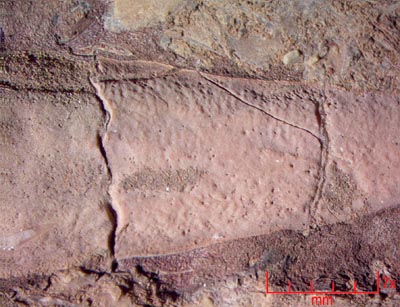
|
Close
up at 7x with the Stereo Microscope of a flattened but 3 dimensionally
preserved specimen. The exterior on most was very smooth, without
ridges or any ornamentation. |
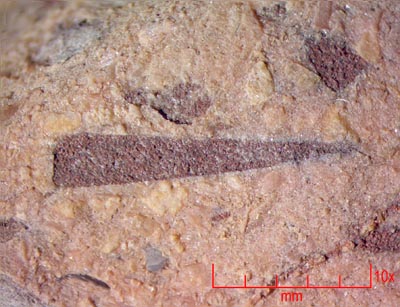
|
Most
specimens like this one were impressions in the limey mudstone.
A large amount of ground up hash can also be seen here, which
was quite common at this site south of Tucson. |
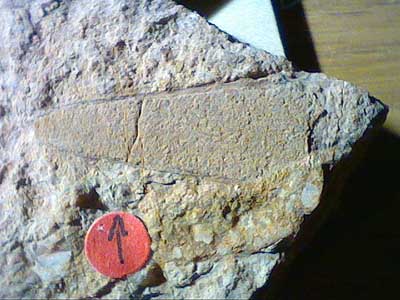
|
For
some specimens, the shell body (test) was shaved in two. This
allows the inside to be seen. Here, the thin wall of the original
shell shows a thin smooth interior with no internal partitions
or chambers. The red dot is 6mm. |
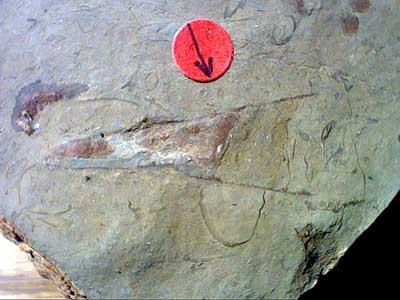
|
Another
specimen that seems to show the thin shell in cross section.
Red dot is 6mm. The small oval fossils are either brachs or ostracods. |
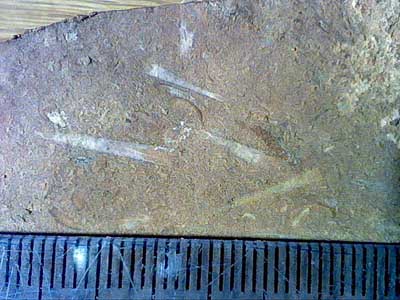
|
Small
Slab with several individuals. Note that they are aligned in
one basic direction, from current along the bottom of the sea
before they were buried. MM scale at bottom. |
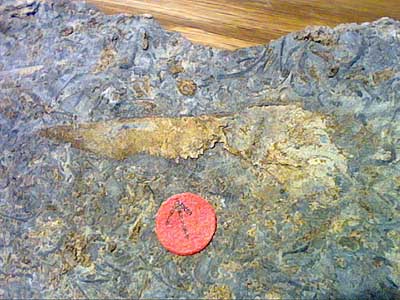
|
A
larger broad specimen with remains of the shell covering the
impression. dot is 6mm. The other arc shaped pices are brachs
and trilobite parts. |
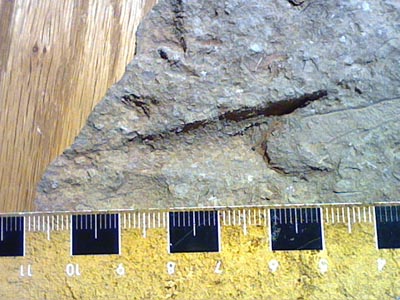
|
A
rare mold of a hyalithid with very little compression in a limestone
matrix. Centimeters at bottom. |
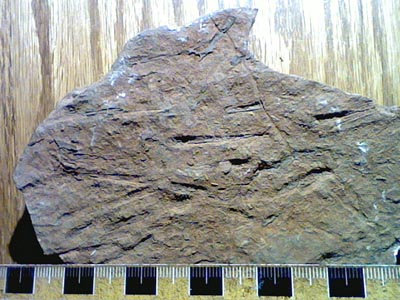
|
Larger
slab from the south of Tucson site with many current orientated
specimens in negative epirelief. |
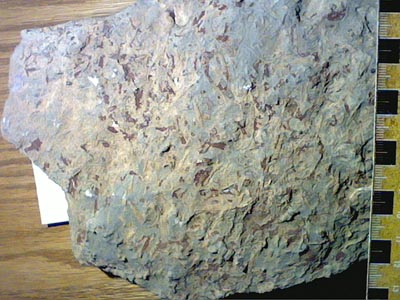
|
This
slab has mostly planed off filled in specimens, which are flush
to the surface. They are light yellow compared to the grey matrix. |
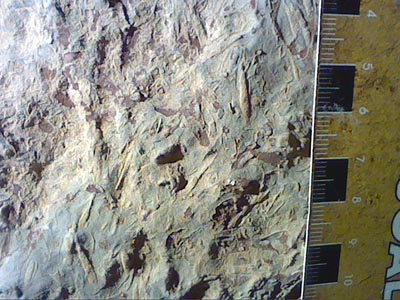
|
Closer
view of the above slab. |
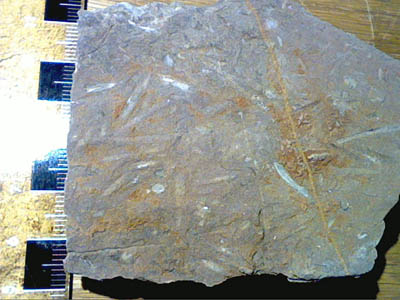
|
This
remarkable slab contains dozens of hyalithids. They are filled
with a lighter grey infilling from the darker matrix. |
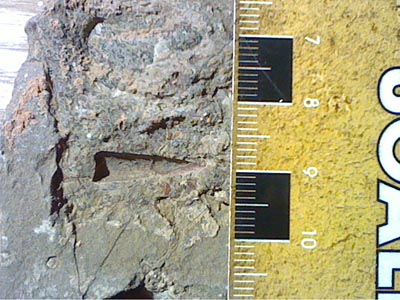
|
Another
rare negative mold of a 3D preserved specimen. |
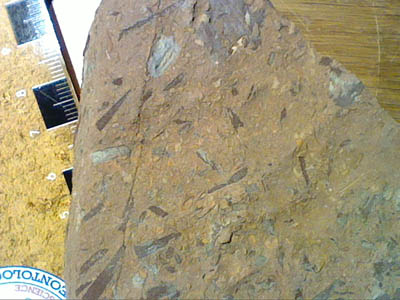
|
The
remains of the flattened shell colors these randomly scattered
specimens. |
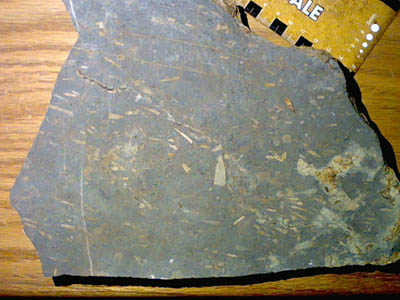
|
Strong
current orientation seen here. Often the narrow pointed end of
the test points toward the direction the current was going. |
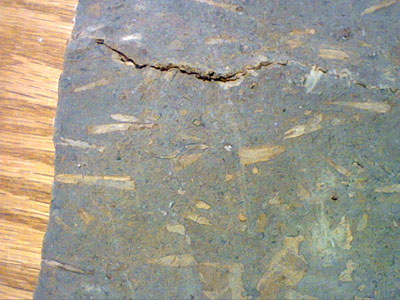
|
Many
current oriented specimens on this interesting slab. |
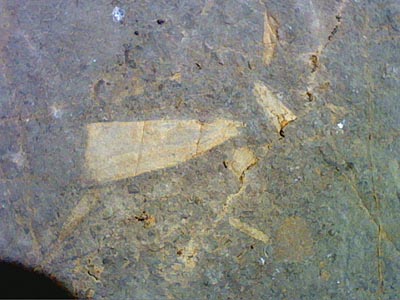
|
Close
up of the above slab with a very wide flattened specimen. |
|
